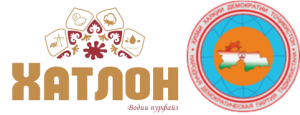Panj
PANJ – THE WAVES IN THE OVERWIND OF THE HISTORY
A brief historical information. Panj district is one of the borderlands of Khatlon region, established on August 29, 1930. Its center is Panj town. The district area is 880.6 square kilometers, with its population consisting of 114 thousand people, including 57098 men and 56902 women. From the national perspective, Tajiks make — 88110 people, Uzbeks make — 25080 people and other nationalities – make 110 people. Panj district has been called Saroykamar in 1931, in 1931-1936 Baumanobod and in 1936 — 1963 Kirovobod. By the decision of the Council of Ministers of the Tajik Soviet Socialist Republic, on 10 January 1963 the district has been named “Panj”.
Panj district in the north borders with Jaloliddini Balkhi, in the east with Farkhor, in the west with Qumsangir districts of the Republic of Tajikistan and in the south with the Islamic State of Afghanistan. There are 5 village councils and 1 town council in the district. The residents of the rural communities are engaged in agriculture, including: planting cotton, cocoonery, horticulture, truck gardening and stock raising.
Attractive travelling areas. From geographical location point of view, Panj district is located in the foot of the mountain ranges of “Kuhi Siyoh” (black mountain) and the coast of Panj river, which is an attractive area with a lovely sight for the tourists. Some acquisitions (scenes) and historical discoveries, which are preserved at school museums, are the evidences of an ancient history of Panj district.
Infrastructure service. There are cultural-entertainment park with the children’s entertainment center, active at the center of the district. The district athletic platform, which has been given for use in August of 2017 with the participation of the Founder of Peace and National Unity, the great Leader of nation, the President of the Republic of Tajikistan, respected Emomali Rahmon, is equipped with the modern equipment and provides a proper serve to the people of the district.
There are 6 markets, active in Panj district, that two of those markets are engaged in the sale of bakery, fruit, vegetables and various types other of food products.
Panj hotel has been given to use in 2014 and offers the best terms and conditions of services, like luxury, half-luxury and simple rooms, consisting of 13 rooms, totally for 70 guests, a restaurant, the canteen of national cuisines and the table tennis hall. Panj district has a round-the-clock terminal of passengers. The distance from the district to Bokhtar city is 107 km, to Kulob city is 123 and to Dushanbe city is 206 km.
Folk craftsmanship and skills. Panj district is known for its crafty people. Such as: blacksmith’s work, by producing spade, mattock, sickle, axe, the horse’s heel-plate, the horse’s saddle, various types of knives; engraving: wooden made products, like kitchen stuff, cradles, windows and doors; traditional oven for baking, are widely developed.
Also, the sewing enterprise named “Bonuvoni Panj” is engaged in sewing the national costumes, needlework, embroidery, bridal dresses, head-wear sewing; carpet-knitting; mattress, pillow and blanket sewing for the newly-wed and for the new-born children.
At the same time, there is other craftsmanship, like jewelry, producing the musical instruments, artistic molding, pottery, etc developing in the district.
The particularities of the district. There are interesting historical events have taken place in Panj district. As well as, in 1877 the Russian Empire military from Chorjuy region of Turkmenistan along the Amu Darya river have arrived in Fayzobod castle area (former Saroykamar) to the territory of today’s Tajikistan. They have built a watchtower there in a high hill, that has been considered the settlement of the Russian and Great Britain borders, and now that hill is an interesting sightseeing place. Also in 1932, the great Tajik revolutionary writer Abolqasem Lahouti, in the process of his trip, has composed his famous composition “Donkey and tractor” — the first work of this district’s skinner Salim Jalilov with a tractor of HTZ-1.5 brand, which the writer has observed during the saw of land.
Search
Archives
